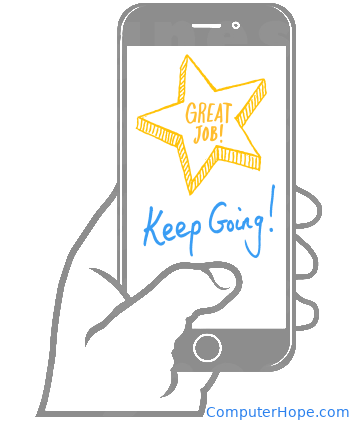Gamification
Updated: 12/10/2023 by Computer Hope

Gamification uses game elements, such as points, competition, or random chance, to enhance a non-game experience. To gamify something, the person designing the experience incorporates interactive elements that people find entertaining or engaging. The goal of gamification is to encourage people to return and participate more often.
Note
Gamification was featured as a top term of 2012.
Examples of gamification
- The Starbucks mobile app uses a system called "My Rewards" that awards the user a virtual currency, "stars," when they add real currency to their mobile Starbucks account. These stars can be spent to get free add-ons such as flavored syrups or extra espresso shots. If the user spends more stars, they can get free food or drinks. Using the app is similar to playing a carnival game because a virtual currency is awarded for certain actions, which can be spent on a chosen "prize."
- Planning Poker is a technique used in engineering and software development teams to estimate how much work is required for a project. Each team member anonymously estimates, or "bets," on the amount of work required to complete a project. The bets are represented by a number, similar to the numbers on playing cards. The numbers are revealed (the "cards are turned over") when everyone has placed their bet, and the group discusses the various estimates. The benefit of planning poker is that no team member's estimate is affected by estimates already made by someone else, encouraging honest evaluation of the work required.
- Several fitness apps, including Nike+ and Fitocracy, allow users to compete with other users based on their recorded athletic activity, such as how many miles run or walked. The aspect of competition encourages users to continue using the app and improve their performance, similar to traditional organized sports.
